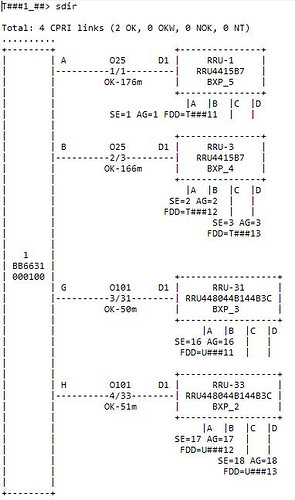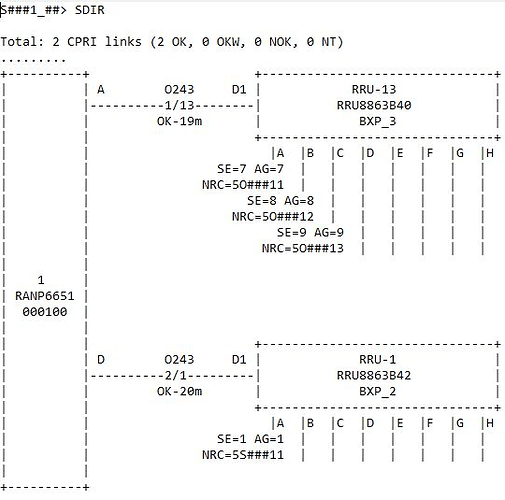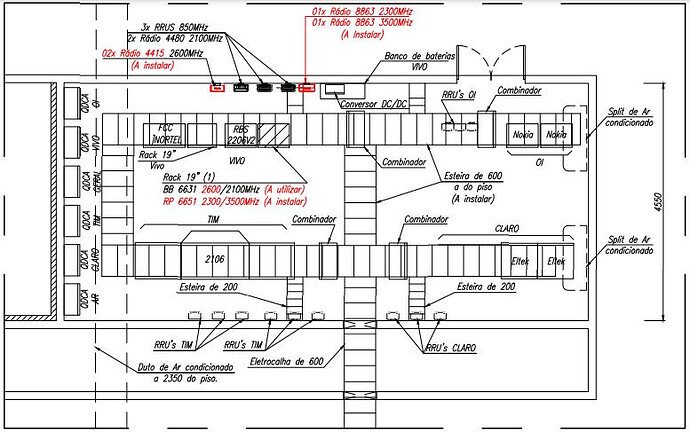Check out a brief overview of how to modernize and expand the LTE/NR network in a shopping mall (indoor project)
In this indoor shopping mall project, the highlight is the two 5G carriers, one at 2300MHz and the other at 3500MHz. This project aims to enhance the user experience by providing greater capacity and coverage in indoor environments. Here are the details:
Modernization of LTE 2600MHz
The existing LTE system at 2600MHz is undergoing a significant upgrade. We are replacing the three old RRUS11B7 radios with two new 4415B7 radios in a 2x2 MIMO configuration, ensuring greater efficiency. These radios are mounted on triple rail supports at a height of 3 meters, following best installation practices.
BB6631 used in this case for LTE technology, here is some information
The BB6631 supports multiple network technologies (GSM, WCDMA, LTE, and 5G), ensuring robust and continuous coverage, essential in high-density areas. Its compact design facilitates installation in limited spaces, while its energy efficiency helps reduce operational costs.
Implementation of 5G with two carriers
The highlight of the project is the deployment of the 5G NR network with two carriers: 2300MHz and 3500MHz on an RP6647. This configuration provides a significant leap in terms of speed and data capacity. The 2300MHz carrier will be used with 2x2 MIMO and covers three sectors (1 passive and 2 active). The 3500MHz carrier is configured with 4x4 MIMO, ensuring even better performance for one of the active sectors.
Infrastructure and Energy
The infrastructure has been completely updated to support the new power demand. Additional rectifiers have been installed, and electrical capacity has been increased with new circuit breakers, adapting the system to the needs of the new 5G radios.
Removal of Old Equipment
During the modernization process, three RRUS11B7 radios were removed to make way for the two new RRUS4415B7 radios.
This project is an example of how modernizing and expanding existing infrastructure can increase network capacity, supporting the growing demand for mobile connectivity in high-traffic areas.
LinkedIn (in Portuguese): ![]()



